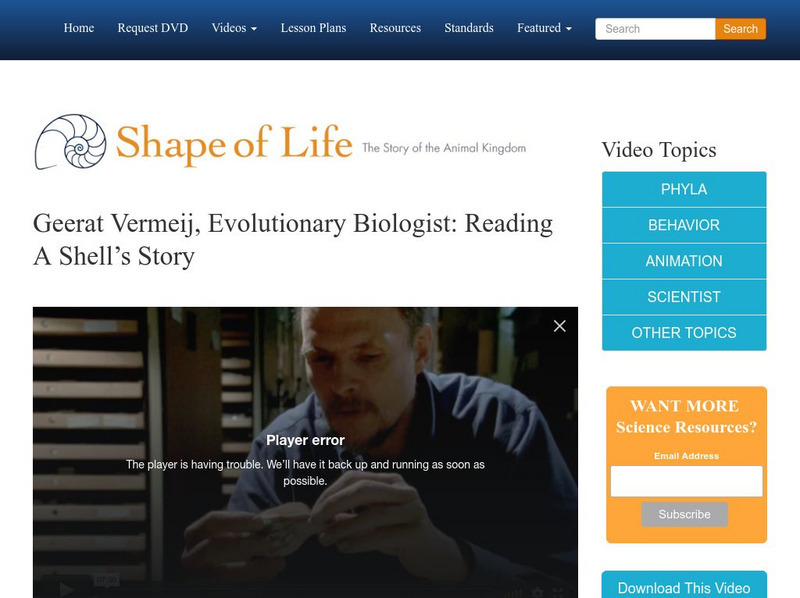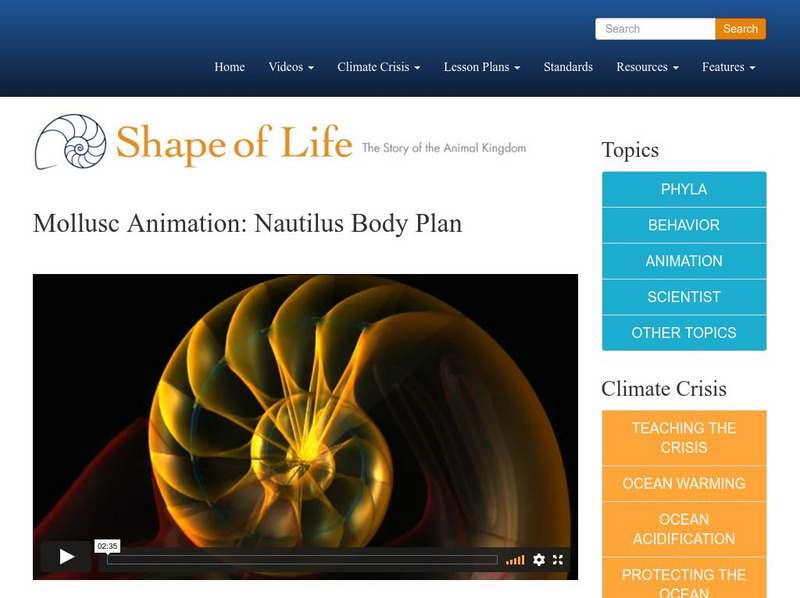Hi, what do you want to do?
PBS
These Creatures Were Darwin's Greatest Enemy
They may not look like much, but beneath that shell lies an evolutionary mystery - one that stumped the biggest names in natural history for over a hundred years.
SciShow
Cephalopods Have a Totally Wild Way of Adapting
With their squishy bodies and color-changing abilities, octopuses and other cephalopods already look like our planet’s resident aliens. But researchers have discovered yet another thing that separates them from most other animals on...
SciShow
Cephalopods Have a Totally Wild Way of Adapting
With their squishy bodies and color-changing abilities, octopuses and other cephalopods already look like our planet’s resident aliens. But researchers have discovered yet another thing that separates them from most other animals on Earth!
Curated Video
Invertebrate
An animal without a backbone or spinal column. A Twig Science Glossary Film. Key scientific terms defined in just 60 seconds using stunning images and concise textual definitions. Twig Science Glossary Films reinforce abstract concepts...
Curated Video
Why do we classify?
How does classification work and why is it so important? Life processes - Variation and classification - Why classify? Learning Points Classification is grouping different living things together by their features. Some animals are not...
Curated Video
Invertebrates
More common than you think ... but what exactly is an invertebrate? Life processes - Variation and classification - Invertebrates Learning Points Invertebrates are animals that have no backbone. Invertebrate groups are insects, arachnids...
Curated Video
Kingdoms
There's a lot of life out there ... and we make sense of it all using kingdoms. Life processes - Variation and classification - Classifying living things Learning Points There are five kingdoms: animal, plant, fungi, protoctista and...
Curated Video
World's largest organism
Can you guess what the world's largest organism is? Life processes - Variation and classification - Classifying living things Learning Points The fungi kingdom includes mushrooms and mould. There are around 1.5 million species of fungi....
Sea Studios Foundation
Shape of Life: Geerat Vermeij, Evolutionary Biologist: Reading a Shell's Story
A video exploring the shells of a mollusc. See Geerat Vermeij observe, with his fingers, mollusc defense strategies as revealed by the design of their shells. For him, shell defense design is analogous to aircraft designed to protect...
Sea Studios Foundation
Shape of Life: Mollusc Animation: Abalone
The abalone demonstrates the basic body plan of molluscs. A foot is used for movement. A radula is a scraping tongue, and a mantle secretes the shell. [1:22]
Sea Studios Foundation
Shape of Life: Mollusc Animation: Nautilus Body Plan
Numerous tentacles, a funnel that evolved from the foot, a mantle that secretes the shell, and a pair of jaws with a radula- these all clearly show the nautilus mollusc design. Spiraling through the shell, a tube called the siphuncle...








